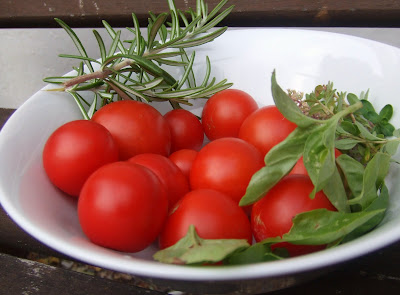
In our near-weekly pizza sessions, we tend to adhere to that maxim that the best pizzas are the simplest ones. A bit of sauce or sliced tomato, mozzarella or ricotta, some herbs from the garden, is usually all that’s used. Occasionally, we’ll shave on a light vegetable topping: asparagus in the springtime (as per Smitten Kitchen’s excellent suggestion), slim yellow courgettes more recently, or smear on a blob of pesto. But the general tendency has been to strip down to the absolute essence, in other words, dough.
On visits to Rome during my early 20s, I, like so many others, frequented Forno Campio de Fiori, a sliver of a shop tucked into a corner of a popular market square. The speciality there is pizza bianca, a rectangular slab of wood-fired dough dressed only with olive oil, coarse salt and perhaps a rosemary sprig. Back in Manhattan, I found a version on a still-undeveloped byway of Soho that was good enough to warrant taking the dreaded N/R train downtown. (Pizza bianca hasn’t figured much in more recent years, though I freely admit that the version served at the UK’s Strada’s pizza chain--called garlic schiacciatella, it's really piazza bianca--is unabashedly moreish.)
Once our dough recipe was honed—Shipton Mill flour, a bit of yeast, salt, olive oil and sugar, allowed to rise slowly in the fridge and cooked on top of the stove in a hefty, well-used pan—it quickly became natural to start off a pizza meal with a bianca. Perfect with a glass of wine and perhaps a few slices of meat or a handful of olives, the bianca sates our hunger pangs and allows an easy slide into the rhythm of cook-assemble-eat.
I’m not quite sure when we started putting the rosemary directly into the dough. And since the idea was G’s, not mine, I can unabashedly say it’s brilliant. Finely-chopped sprigs—anywhere from a teaspoon to a tablespoon, depending on taste—are gradually sprinkled on the dough as it’s shaped and rolled out, ensuring that the herb is embedded, rather than all exposed to the pan’s heat. It’s then cooked as normal. The only other occasional fillip is to rub the top with a cut garlic clove before topping with oil and salt and slicing.
As well as looking pretty, the result tastes pretty spectacular. I can only reason that the chopped rosemary integrates with the dough and warms up through the cooking process, allowing its flavour and fragrance to come through more fully.
Inadvertently, we also seem to have found an adaptable template for herb-infused crusts. Just last night, instead of topping the mozzarella and courgette pizza with thyme, we kneaded the flowers and leaves directly into the risen dough. If our oregano plant revives, its leaves will likely feature in a pizza topped with tomatoes from our garden. And come autumn, I’m envisioning a few of the leaves from the enormous sage bush by our front gate being plucked for the base of a mushroom and taleggio pie.
Did I say that the simplest pizzas are usually the best? Depends, I suppose, on what you call simple.
No comments:
Post a Comment